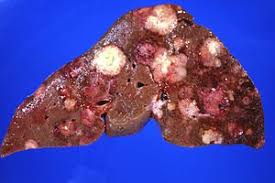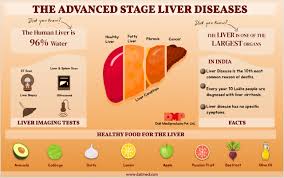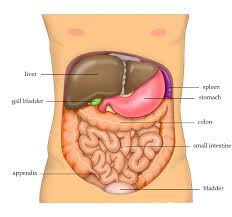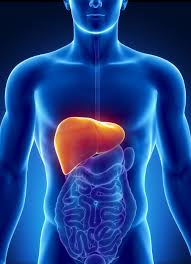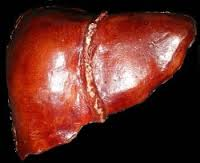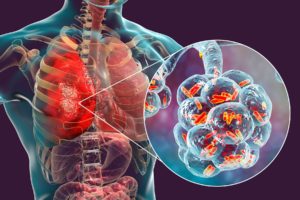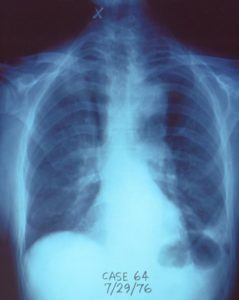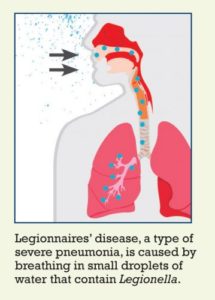QUOTE FOR THE WEEKEND:
“There are many types of liver disease, which can be caused by infections, inherited conditions, obesity and misuse of alcohol. Over time, liver disease may lead to scarring and more serious complications. Early treatment can help heal the damage and prevent liver failure.”
Cleveland Clinic
What happens to the liver when diseased?
The liver is an organ about the size of a football. It sits just under your rib cage on the right side of your abdomen. The liver is essential for digesting food and ridding your body of toxic substances.
In America, liver disease affects millions and is on the rise. Did you know there are more than 100 different types of liver disease? Living with long-term, chronic liver disease can cause damage to your liver.
Common Causes of Liver Disease
- Viruses
- Genetics
- Autoimmune disease
- Excessive use of alcohol
- Poor diet and/or obesity
- Reactions to medications, street drugs, or toxic chemicals
Most liver diseases damage your liver in similar ways and for many, the progression of liver disease looks the same regardless of the underlying disease.
Early Diagnosis of Liver Disease is Very Important
Early diagnosis may prevent damage from occurring in your liver. Your liver is an incredible organ. If you’re diagnosed when some scar tissue has already formed, your liver can repair and even regenerate itself. Because of this, damage from liver disease can often be reversed with a well-managed treatment plan.
Many people with liver disease do not look or feel sick even though damage is happening to their liver. At a certain point in the progression of liver disease damage can become irreversible and lead to liver failure, liver cancer, or death.
Did you know that hepatitis simply means inflammation of the liver?
Inflammation is the body’s natural response to injury and an important part of healing or immune response. Think about when you get a cut or injury to your skin. The area around the wound becomes swollen or inflamed. Seeing the swelling is not the only way you experience the inflammatory phase. You may also experience pain, redness, or the wound may feel warm to the touch. Under the skin, your body is hard at work to stop the bleeding and prevent infection. Blood vessels near the wound widen, or dilate, making more room for special healing and repair cells, or cells in the wounded area. These cells remove damaged cells and harmful substances (like bacteria or viruses) and allow the rest of the healing process to continue. Inflammation is essential to fight infection.
When Inflammation Becomes Disease
While this controlled inflammation is essential to maintain proper function and balance in the liver, if it becomes dysregulated it drives the progression of liver disease. This diseased inflammation is called hepatitis. We most often hear the word hepatitis when we talk about viral hepatitis, like hepatitis A, B, or C, but viruses are not the only cause of hepatitis. Infection with a virus, overindulging in alcohol or fatty foods, or even our own immune system can trigger a continual inflammatory response in the liver, disrupting the closely regulated cycle of inflammation and healing. When someone has liver disease, their liver enters into a very dangerous cycle. Persistent inflammation sends nonstop signals to the repair cells to continue depositing collagen. The extra collagen stiffens around the tissue like it is supposed to in the healthy liver but, instead of a signal being released to stop the inflammation and discard the extra collagen, the inflammation continues and even more collagen is deposited leading to more stiffening. This is how scars or fibroids, develop in the liver. If left untreated, the scars will continue to replace healthy liver cells, leading to severe scarring known as cirrhosis.
It’s important to speak to your doctor about any possible risk factors for hepatitis or if you’ve experienced symptoms. There are many different causes for hepatitis with varying risks and symptoms.
Check out Tuesday on Hepatitis!
QUOTE FOR FRIDAY:
“The liver is the largest organ in your body. It weighs about 3 pounds and is about the size of a football. It performs many functions essential for good health and a long life. Your liver works around the clock to keep you healthy. Among its most important jobs are: 1.) continually producing important substances Your liver continually produces bile. This is a chemical that helps turn fats into energy that your body uses. Bile is necessary for the digestive process.2.) Your liver also creates albumin. This is a blood protein that helps carry hormones, drugs, and fatty acids throughout your body. 3.) Your liver also creates most of the substances that help your blood clot after injury. 4.) The liver helps your body get rid of bilirubin. This happens from the breakdown of your red blood cells. When you take in a potentially toxic substance, like alcohol or medicine, your liver helps alter it and remove it from your body. 5.) When bacteria, viruses, and other harmful organisms enter your body, your liver can find and destroy them. This is done by specialized cells in your liver. 6.) The liver helps your body maintain a healthy level of blood sugar. Your liver supplies glucose to your blood when it’s needed. It also removes glucose from your blood when there’s too much.”.
John Hopkins Medicine
Understanding the Liver’s Function with the impact of disease to this organ!
Liver disease is also referred to Hepatic Disease. Liver Disease is a term that is used when there is any disturbance of the liver function that causes illness. It is a broad term to describe when more than 75% or three quarters of liver tissue needed is affected and decreased function in the liver occurs. The number one cause of liver disease is alcohol abuse in North America. They can cause liver inflammation, referred to as alcoholic hepatitis. Other causes include Cirrhosis, Cholestasis, Steatosis, Hepatitis, Viruses, Non-Alcoholic Fatty Liver, Hemachromatosis, Wilson’s Disease and Gilbert’s Disease.
Causes: Cirrhosis
Cirrhosis is when the liver cells are replaced by permanent scar tissue as a result of chronic liver disease. It is considered the late-stage of liver disease. Cirrhosis is common among chronic alcohol abuse users where the fat accumulation occurs in the liver cells and causes scar tissue. Cholestasis is when the bile flow is obstructed from the gallbladder or duodenum. Steatosis is the term used when cholesterol and triglycerides accumulate in the liver.
Causes: Hepatitis
Hepatitis is a term used to describe the inflammation on liver cells. They can become inflamed due to infection.
There are many forms of Hepatitis:
Hepatitis A (Hep A) is a viral infection primarily spread through the fecal-oral route when small amounts of infected fecal matter are ingested. An acute inflammation of the liver occurs but there is a way to prevent this type of infection. There is a vaccine available and the best way to help prevent it is by a good hand washing.
Hepatitis B (Hep B) is spread by exposure to body fluids and can cause an acute infection. If left untreated, it can progress into a chronic inflammation and on into cirrhosis. There is also a vaccine for this form of hepatitis. Typically, the vaccine contains both Hep A and B in a combination series of doses.
Hepatitis C (Hep C) is caused by a virus different from Hep A or Hep B. It can either be “acute” or “chronic” and is primarily spread through contact with the blood of an infected person. The most common way is by sharing needles or other equipment to inject drugs. Before 1992, Hepatitis C was also commonly spread through blood transfusions and organ transplants which led to the start of a widespread screening of blood supplies. Another way it can be transmitted is through being born to a mother who has it. There are less common ways to contract Hepatitis C, and that’s through sharing personal care items that may have come into contact with another person’s blood (razors, toothbrushes), or having unprotected sex with a infected person. Some people are at an increased risk for Hepatitis C. Those individuals include: Children born to mothers infected with this Hep C; current injection drug users (most common way Hepatitis C is spread in the US), past injection drug users, recipients of donated blood (blood products and organs), hemodialysis patients who spent many years on dialysis for kidney failure, people who received body piercings or tattoos done with non-sterile instruments, & people with known exposure to Hepatitis C like Health care workers or recipients of blood or organs from a donor who tested positive.
Hepatitis D (Hep D) is known as “delta hepatitis” can also be “acute” or “chronic” but is uncommon in the United States. It requires the Hepatitis B virus to survive. It is transmitted through sexual contact with infected blood or blood products. There is also no vaccine available for this virus. Hepatitis E (Hep E) is caused by Ribonucleic Acid (RNA) virus. It is transmitted mainly through the fecal-oral route due to fecal contaminated drinking water.
Causes: NAFLD
Non-alcoholic fatty liver disease (NAFLD) is the build up of extra fat in liver cells that is not caused by alcohol. It is normal for the liver to contain some fat. liver’s weight is fat, then it NAFLD tends to develop in people who are overweight or obese or have diabetes, high cholesterol or high triglycerides. Rapid weight loss and poor eating habits also may lead to NAFLD. However, some people develop NAFLD even if they do not have any risk factors. NAFLD affects up to 25% of people in the United States. However, if more than 5% up to 10% of the liver’s weight is fat then the liver is called a fatty liver called steatosis. Non-Alcoholic Fatty Liver (NAFL) describes the accumulation of fat within the liver that can cause an inflammation and a gradual decrease in function.
Those at risk for NAFLD? NAFLD tends to develop in people who are overweight or obese or have diabetes, high cholesterol or high triglycerides. Rapid weight loss and poor eating habits also may lead to NAFLD. However, some people develop NAFLD even if they do not have any risk factors. NAFLD affects up to 25% of people in the United States.
RISKS NAFLD may cause the liver to swell (steatohepatitis). A swollen liver may cause scarring (cirrhosis) over time and may even lead to liver cancer or liver failure.
SYMPTOMS NAFLD often has no symptoms. When symptoms occur, they may include fatigue, weakness, weight loss, loss of appetite, nausea, abdominal pain, spider-like blood vessels, yellowing of the skin and eyes (jaundice), itching, fluid build up and swelling of the legs (edema) and abdomen (ascites), and mental confusion.
DIAGNOSIS NAFLD is initially suspected if blood tests show high levels of liver enzymes. However, other liver diseases are first ruled out through additional tests. Often, an ultrasound is used to confirm the NAFLD diagnosis.
QUOTE FOR WEDNESDAY:
“Legionnaires’ disease usually develops two to 10 days after exposure to legionella bacteria. It frequently begins with the following signs and symptoms: Headache, Muscle Aches, Fever that may be 104 F (40 C) or higher.”.
MAYO CLINIC
QUOTE FOR TUESDAY:
“Legionnaires’ disease and Pontiac Fever are collectively known as Legionellosis, a disease caused by Legionella bacteria. Managing Legionella and preventing worker exposures and Legionellosis cases depend on implementing an effective water management program. These programs focus on describing water systems and their components, identifying areas where Legionella could grow, deciding where control measures are needed and how to monitor them, planning response actions when control measures fail, and monitoring and documenting water management activities.”.
United States Department of Labor (OSHA Occupational Health and Administration).
Part II What is Legionairres/Pontiac Fever
Who to Test for Legionnaires’ Disease:
·Patients who have failed outpatient antibiotic therapy
·Patients with severe pneumonia, in particular those requiring intensive care
·Immuno-compromised host with pneumonia
·Patients with pneumonia in the setting of a legionellosis outbreak
·Patients with a travel history [Patients that have traveled away from their home within two weeks before the onset of illness.]
·Patients suspected of healthcare-associated pneumonia
RISK FACTORS:
Not everyone exposed to legionella bacteria becomes sick. You’re more likely to develop the infection if you:
·Smoke. Smoking damages the lungs, making you more susceptible to all types of lung infections.
·Have a weakened immune system as a result of HIV/AIDS or certain medications, especially corticosteroids and drugs taken to prevent organ rejection after a transplant.
·Have a chronic lung disease such as emphysema or another serious condition such as diabetes, kidney disease or cancer.
·Are 50 years of age or older.
Legionnaires’ disease is a sporadic and local problem in hospitals and nursing homes, where germs may spread easily and people are vulnerable to infection.
COMPLICATIONS:
Legionnaires’ disease can lead to a number of life-threatening complications, including:
·Respiratory failure. This occurs when the lungs are no longer able to provide the body with enough oxygen or can’t remove enough carbon dioxide from the blood.
·Septic shock. This occurs when a severe, sudden drop in blood pressure reduces blood flow to vital organs, especially to the kidneys and brain. The heart tries to compensate by increasing the volume of blood pumped, but the extra workload eventually weakens the heart and reduces blood flow even further.
·Acute kidney failure. This is the sudden loss of your kidneys’ ability to perform their main function — filtering waste material from your blood. When your kidneys fail, dangerous levels of fluid and waste accumulate in your body.
When not treated effectively and promptly, Legionnaires’ disease may be fatal, especially if your immune system is weakened by disease or medications.
You’re likely to start by seeing your family doctor or a primary care provider. However, in some cases, you may be referred to a doctor who specializes in treating lung disease (pulmonologist) or infectious diseases, or you may be advised to go to an emergency department.
NOW YOU KNOW THE FACTS!
QUOTE FOR MONDAY:
“Legionella bacteria can cause a serious type of pneumonia (lung infection) called Legionnaires’ disease. Legionella bacteria can also cause a less serious illness called Pontiac fever. Legionella bacteria are found naturally in freshwater environments, like lakes and streams. The bacteria can become a health concern when they grow and spread in human-made building water systems.”.
Centers for Disease Control and Prevention (CDC)
Part I What is Legionairres/Pontiac Fever
Legionella was discovered after an outbreak in 1976 among people who went to a Philadelphia convention of the American Legion. Those who were affected suffered from a type of pneumonia that eventually became known as Legionnaires’ disease.
The first identified cases of Pontiac fever occurred in 1968 in Pontiac, Michigan, among people who worked at and visited the city’s health department. It wasn’t until Legionella was discovered after the 1976 Legionnaires’ disease outbreak in Philadelphia that public health officials were able to show that Legionella causes both diseases.
Legionella bacteria are found naturally in freshwater environments, like lakes and streams. The bacteria can become a health concern when they grow and spread in human-made building water systems like
- Showerheads and sink faucets
- Cooling towers (structures that contain water and a fan as part of centralized air cooling systems for buildings or industrial processes)
- Hot tubs
- Decorative fountains and water features
- Hot water tanks and heaters
- Large, complex plumbing systems
Home and car air-conditioning units do not use water to cool the air, so they are not a risk for Legionella growth.
However, Legionella can grow in the windshield wiper fluid tank of a vehicle (such as a car, truck, van, school bus, or taxi), particularly if the tank is filled with water and not genuine windshield cleaner fluid.
How It Spreads
After Legionella grows and multiplies in a building water system, water containing Legionella can spread in droplets small enough for people to breathe in. People can get Legionnaires’ disease or Pontiac fever when they breathe in small droplets of water in the air that contain the bacteria.
Less commonly, people can get sick by aspiration of drinking water containing Legionella. This happens when water accidently goes into the lungs while drinking. People at increased risk of aspiration include those with swallowing difficulties.
In general, people do not spread Legionnaires’ disease and Pontiac fever to other people. However, this may be possible under rare circumstances.



